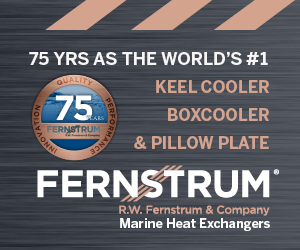Ingram Marine Group, one of the largest barge operators on the inland waterways, has announced plans to invest $50 million over three years to upgrade its barge-loading and grain-handling facilities in the St. Louis area.
The company focuses on moving bulk and break-bulk commodities, including fertilizer, steel and grain exports to the Gulf Coast. With its acquisition of SCF in February 2024, Ingram also picked up fleeting and barge maintenance services, expanding its workforce in the St. Louis region to about 200.
Dan Lester, senior vice president of business development at Ingram Infrastructure Group (IIG), made the announcement as part of a virtual panel session moderated by Mary Lamie, executive vice president of multimodal enterprises for Bi-State Development, for this year’s FreightWeekSTL, an event hosted each year by the St. Louis Regional Freightway.
Key projects covered by the investment include the expansion of the Municipal River Terminal (MRT) on the riverfront just north of St. Louis, which will feature one of the largest and most efficient barge-to-rail direct transfer systems focused on fertilizer crop nutrients for farmers throughout the Midwest. Additionally, the company is rebuilding the Tyler Street terminal just south of the MRT to handle export bulk materials more efficiently.
Lester emphasized the importance of the St. Louis region to Ingram’s operations and said the area has been a hub for the company’s barge line for a long time.
“St. Louis is a key growth area for the infrastructure group,” Lester said. “We have eight landside terminals on the Missouri and Illinois sides of the Mississippi River here.”
On the Illinois side of the Mississippi River, Ingram is developing another rail-to-barge facility to support grain and grain byproducts. The projects are funded through a combination of private funds and a public BUILD grant. Ingram is working with various agencies to deliver projects, including the St. Louis Port Authority and America’s Central Port.
The company is also committed to sustainability and reducing emissions.
“We have made strategic investments in companies producing alternative fuels, and we anticipate that in the next three to five years, we will be powering our fleet with some percentage of alternative fuel,” Lester said.
Ingram has also invested in new material handling equipment and replaced older locomotives with newer, more efficient units. Recognizing that the company is operating in an area with non-attainment for air quality, Ingram’s air emissions capture rate has been enhanced, which will positively impact the region’s air quality. Lester mentioned dust-capturing equipment and lower-emission Sennebogen shore cranes replacing older equipment. Older locomotives are also being replaced with cleaner-burning engines.
As the discussion turned to opportunities for increased movement of cargo between the Port of New Orleans and the Ag Coast of America, Lester highlighted the strategic advantages of the St. Louis region, including its connectivity between various modes of freight transportation.
“I think with St. Louis having such a nexus of connectivity, you have this perfect intersection of Class I Railroads, the Mississippi River and then major highways,” said Lester, who also noted that St. Louis is the northernmost ice-free, lock-free port, providing significant opportunities for servicing shippers of ag products and grain byproducts for export markets. “We really are, logistically speaking, in a great spot for northbound and southbound freight. That will create additional opportunities and economies of scale. We can take products from St. Louis, the Midwest in general, put them into the river system and run a 40-barge tow all the way down to the Gulf. That generates a pretty significant competitive advantage for our customers, our shippers, where they can utilize the efficiency and the economies of the waterways to handle their export products.”
Lester said the return of manufacturing to North America presents additional growth opportunities for Ingram. Going back to the supply-chain disruptions during COVID, customers, shippers and producers have been looking at how to use domestic transportation to create secure supply chains to support reshoring, Lester said. He believes that will create a large opportunity for an area like the St. Louis region, where there is a good logistics hub and a large number of operators in the area.
FreightWeekSTL 2025 sessions are available to stream online at www.freightweekstl.com.




